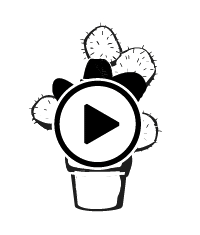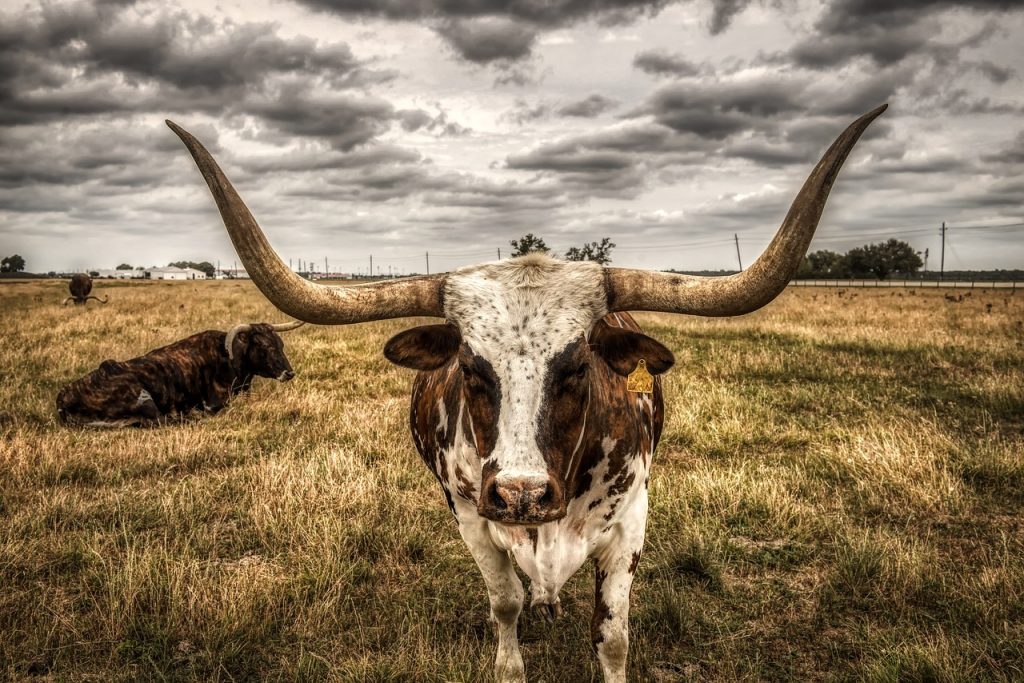(Volume 2 Módulo 3) Mis celebraciones
148 Para terminar… Conversemos
¡Conversemos! 7: El mundo tejano
- Attribution: https://pixabay.com/photos/longhorn-steer-cattle-animals-4091042/
[Copy pre-activity Google doc here]
“¡Conversemos! 7” will be themed around El mundo tejano and the My Spanish Texas final project. The class will be divided into two groups: Half the class will talk about their projects in a conversation style, “poster-presentation” format, while the other half will be the audience. Then we will switch roles. As a member of the audience, you are free to move around the room at your own discretion and listen to as many presentations as you like.
If you are not familiar with poster-sessions at conferences, it is important to note that they serve two purposes: On the one hand, you learn about projects/research; on the other hand, you network and make new connections. What is your style– (1) to maximize the number of projects you learn about and the people you meet or to learn a lot about a few projects and get to know the presenters well; (2) to travel from one presentation to another with a group of friends or to explore your personal interests on your own? The following pre-activity will help you prepare for your role as both a presenter and an audience member. Be sure to consider your style.
Before this in-class activity, please complete Pasos 1 through 5 below.
Paso 1. Start this pre-activity by preparing a list of questions you will use in your role as a presenter and audience member. Use the vocabulary in the current section of our textbook, as well as previous sections. In addition, use both the past and present tense of verbs (both regular and irregular). Remember that these questions and their answers are only the beginning of a conversation. What do you and your colleagues have or don’t have in common? What do you find interesting about what was shared? What do you agree or disagree with?
| Presenter: What questions can you ask the audience to keep them engaged and to ensure comprehension as you talk about your project? What questions can you ask to get to know them better and to network? | |
| 1. | |
| 2. | |
| 3. | |
| 4. | |
| 5. | |
| Audience: What questions can you ask the presenter to show interest in the project and to learn more? What questions can you ask to get to know the presenter (and fellow audience members) better? | |
| 6. | |
| 7. | |
| 8. | |
| 9. | |
| 10. | |
Paso 2. Now prepare a list of useful vocabulary words and phrases from previous sections of our textbook (and beyond) to share information related to your project and presentation. Importantly, do not write complete sentences here. You will lose points during the activity if you are reading.
| 1. | |
| 2. | |
| 3. | |
| 4. | |
| 5. | |
| 6. | |
| 7. | |
| 8. | |
| 9. | |
| 10. |
Paso 3. Remember, cognates are a great tool for communication. Have you included any in sections (1) or (2) above? Go ahead and copy all the cognates you used above into the columns below. If possible, group the words by association and label the category. Practice pronouncing these words and make sure you are familiar with the singular/plural and masculine/feminine forms.
| . | ||
| . | ||
| . | ||
| . | ||
| . | ||
| . |
Paso 4. As the presenter, you have selected a visual to accompany your presentation. This item does more than assist in comprehension– it’s an attention grabber that motivates people to come to your “booth”! Remember, the audience has a bunch of presentations to choose from.
| Describe your visual (e.g., image, surprising/interesting fact) and why you selected it:
|
Paso 5. Finally, prepare a list of fillers to hold the floor, expressions that show interest and support, and helpful phrases for sharing opinions, expressing (dis)agreement, and getting others involved.
| Fillers | Show interest | Share / request opinion | Express (dis)agreement |
| Mmmmmm, muy interesante… | ¡Qué bien! | Creo/pienso que… | (No) Estoy de acuerdo contigo. |
| ¿Y tú? | |||
| . |
Paso 6. Upload this pre-activity to Canvas before the in-class ¡Conversemos! activity.
 (OPCIONAL) Mi celebración pasada favorita
(OPCIONAL) Mi celebración pasada favorita
In this module you will talk about your favorite past celebration.

I. Antes de escribir
Use the questions that follow to organize your ideas. Your instructor can help you with words or constructions that are unfamiliar to you.
- ¿Cuál es tu celebración pasada favorita?
- ¿Cuándo fue esta celebración?
- ¿Dónde la celebraste? (Describe el lugar, estado y/o país.)
- ¿Con quién estuviste? ¿Cuánto tiempo pasaste celebrando?
- ¿Qué comida y bebida hubo en la celebración? Describe la comida y la bebida (usa los verbos haber, ser y estar).
- ¿Cómo hiciste? Describe tus actividades y las de otras personas en detalle.
- Explica por qué es tu celebración pasada favorita.
II. A escribir
Now write your paragraph between 100 and 250 words, and…
- Pay attention to gender and number when you use articles, adjectives, and nouns and to the correct verb conjugations.
- Use connectors and conjunctions to connect your ideas. For example, use y, también (also), además (also), pero (but), aunque (even though), ya que (because), entonces (so), de igual forma (in the same way), etc. Your instructor can help you to use these words correctly.
- Complement your paragraph with:
- At least one photo that shows you during the favorite celebration you are writing about.
- Additional photos (a maximum of two) of you and your friends/family during the celebration you are describing.
- If you use photos that you have not taken, please do not forget to cite the source. We recommend that you use Creative Common photos (CC, CC BY, CC BY-SA). You can search for this type of photos on https://search.creativecommons.org/.
III. Después de escribir
Now read your paragraph, and focus on the following:
- Content: Have you included all the information required? Are your photos big and clear enough to convey your message?
- Grammar:
- Articles, adjectives, and nouns: Do they agree in gender and number?
- Verbs: Have you conjugated your verbs correctly?
- Cohesion: Have you connected your ideas with the suggested connectors and conjunctions?
- Go over your text, improve it, and write a new, polished version.
 IV. Trabajo final
IV. Trabajo final
Compile all the parts of the project, and publish the final document (with all the parts that you wrote in Modules 1, 2, and 3) digitally. Your instructor will provide you with information on how to do this.


